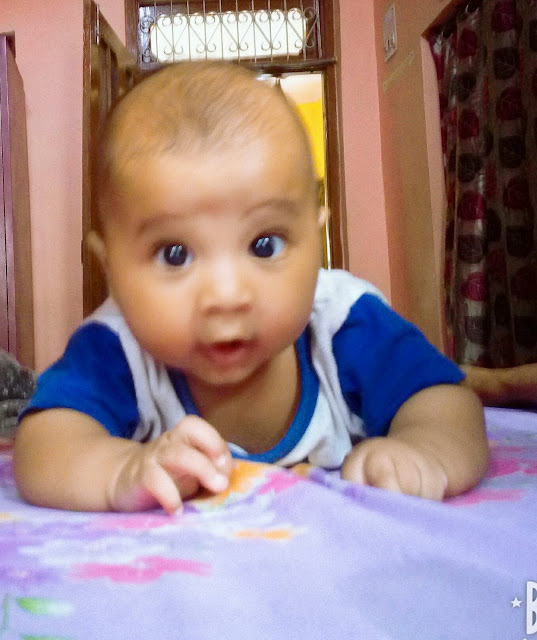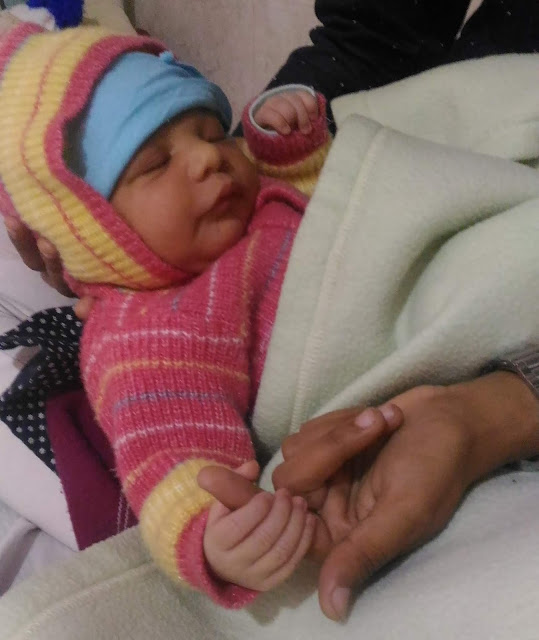Small Little bundle of joy is now Five Month Old . *Smiles*
A Five Month Old Baby : Growth
- At this stage, your infant may begin playing little diversions as he comprehends that straightforward activities have results.
- A run of the mill precedent may drop a question just to watch you lift it up or to perceive how and where it falls. Become acclimated to this; soon he is taking awesome pleasure watching you get after him.
- While previously, your child had demonstrated an interest for strong hues, now he is starting to deal with inconspicuous contrasts in pastels.
- He is moving better at following little questions and he may even have the capacity to perceive a protest in the wake of seeing just piece of it.
- He will likewise begin to be cheerful being alone somewhat more, especially as he would now be able to play with his hands and feet for a couple of minutes on end.
- All of a sudden you will understand that an irregular quiet has plummeted and your infant, a long way from requiring your consideration for a large portion of each waking hour, is presently interesting himself – for brief periods at any rate.
- Similarly, by five months he will begin to demonstrate a solid connection to you by raising her arms to be gotten and crying when you leave the room.
A Five Month Old Baby : Motor Skills
- Five Month Old Baby can sit upright for longer timeframes. Your child likely still should be propped up with a pad, however he may likewise have the capacity to sit unsupported for a couple of moments at once.
- Some 5-month-olds can begin rolling once again from their back to their belly. Once your infant rolls over, you may see him working his legs and shaking.
- He's preparing for creeping and hurrying, which are only two or three months away! Be that as it may, recollect, when child can move over, ensure you never abandon him on a bed or other high surface where he can incidentally move off and get harmed.
- Something else you'll see at five months is that your child's grip is getting more grounded.
- He can pull questions nearer and lift them up in the palm of his hand at that point move them adroitly from one hand to the next.
- He may even have the capacity to hold a container or sippy glass independent from anyone else.
A Five Month Old Baby : Sleep Pattern
- Most infants stay asleep for the entire evening by five months, however not all.
- To urge your infant to get into a customary evening time rest cadence, build up a sleep time schedule. Begin with a hot shower, trailed by a couple of minutes of delicate shaking with a melody and story, and his eyes are certain to begin hanging.
- Start putting your child into the crib sluggish, as opposed to completely sleeping. Along these lines, he will figure out how to relieve himself to rest instead of depending on you.
- Amid the daytime, your child will in any case require two snoozes - one toward the beginning of the day and one after lunch.
- Make an effort not to defer snoozes until the point when child is as of now worn out and testy. Place him into the bunk at the main indications of lethargy.
- Your infant could begin awakening all the more amid the night to bolster, and may not yet rest longer than five to six hours on end. He may in any case rest around 12 to 15 hours add up to each day.
- He may begin sitting up and waking himself all the while. On the off chance that conceivable, let him attempt to return to mull over his very own rather than promptly endeavoring to give comfort.
- You and your accomplice ought to choose in advance on the off chance that you are OK with this kind of infant rest "preparing." Many guardians consider it the "deal with it" technique.
A Five Month Old Baby : Communication and Senses
- Five Month Old Baby's vision is proceeding to move forward. They can see well at various separations and their eyes can concentrate together without intersection.
- At five months, your infant's shading observation has honed to the point where he can differentiate between two shades of a similar shading.
- Five Month Old Baby ought to jibber jabber away at this point, and those chatters may even be beginning to seem like genuine words.
- Five Month Old Baby can start to put consonant and vowel sounds together, (for example, ''ba-ba''). In the event that you hear a ''mama'' or ''da-da'' in the blend, don't get excessively energized. Infants at this age haven't yet doled out significance to words. Hold up another couple of months and those ''mama mas'' and ''da-das'' will be coordinated at you.
- At five months, babies are beginning to comprehend the sounds they hear, for example, a pooch woofing or an auto motor beginning.
- In spite of the fact that they can't yet comprehend words, they may turn their head at the sound of their name or a basic direction like ''no.''
A Five Month Old Baby Shaurya's Highlights
- 8.8 kg
- 30 inches
- Recognize intense hues
- Raise his chest upheld by his arms when on his stomach
- Interest himself by playing with his hands and feet
- Unite the two hands
- Grin precipitously
- Screech in enjoyment
- Reach for a question
- Turn towards another sound
- Turn toward a voice (especially mummy's)
- Perceive his very own name
- Keep his head level with her body when pulled to a sitting position
- Sit quickly without help
- Draw up to a standing position from sitting
- Stand while clutching somebody or something
- Protest in the event that you take a toy away
- Pass a 3D shape or other protest from one hand to the next
- Search for a dropped protest









